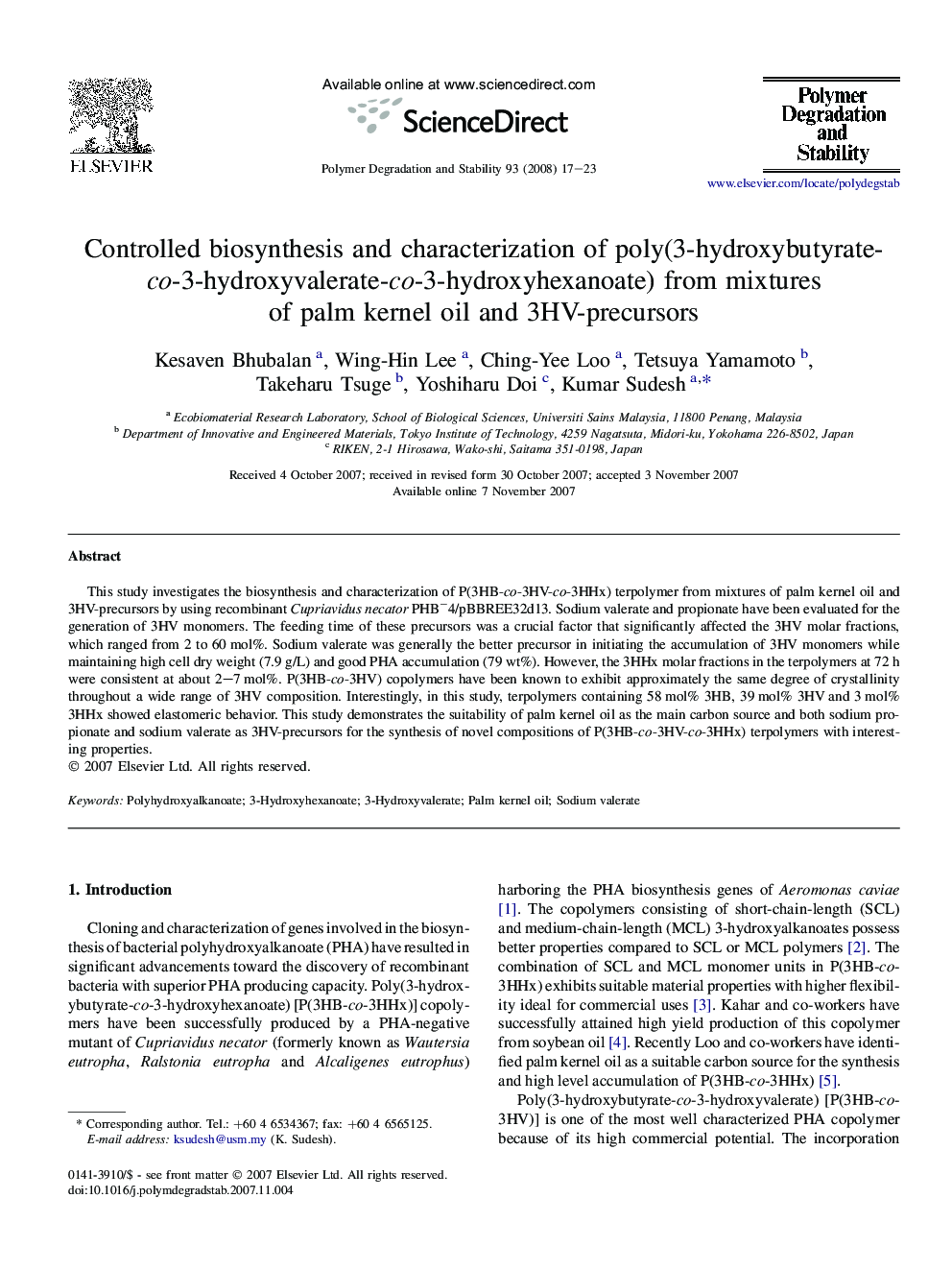| Article ID | Journal | Published Year | Pages | File Type |
|---|---|---|---|---|
| 5204634 | Polymer Degradation and Stability | 2008 | 7 Pages |
Abstract
This study investigates the biosynthesis and characterization of P(3HB-co-3HV-co-3HHx) terpolymer from mixtures of palm kernel oil and 3HV-precursors by using recombinant Cupriavidus necator PHBâ4/pBBREE32d13. Sodium valerate and propionate have been evaluated for the generation of 3HV monomers. The feeding time of these precursors was a crucial factor that significantly affected the 3HV molar fractions, which ranged from 2 to 60Â mol%. Sodium valerate was generally the better precursor in initiating the accumulation of 3HV monomers while maintaining high cell dry weight (7.9Â g/L) and good PHA accumulation (79Â wt%). However, the 3HHx molar fractions in the terpolymers at 72Â h were consistent at about 2-7Â mol%. P(3HB-co-3HV) copolymers have been known to exhibit approximately the same degree of crystallinity throughout a wide range of 3HV composition. Interestingly, in this study, terpolymers containing 58Â mol% 3HB, 39Â mol% 3HV and 3Â mol% 3HHx showed elastomeric behavior. This study demonstrates the suitability of palm kernel oil as the main carbon source and both sodium propionate and sodium valerate as 3HV-precursors for the synthesis of novel compositions of P(3HB-co-3HV-co-3HHx) terpolymers with interesting properties.
Related Topics
Physical Sciences and Engineering
Chemistry
Organic Chemistry
Authors
Kesaven Bhubalan, Wing-Hin Lee, Ching-Yee Loo, Tetsuya Yamamoto, Takeharu Tsuge, Yoshiharu Doi, Kumar Sudesh,
